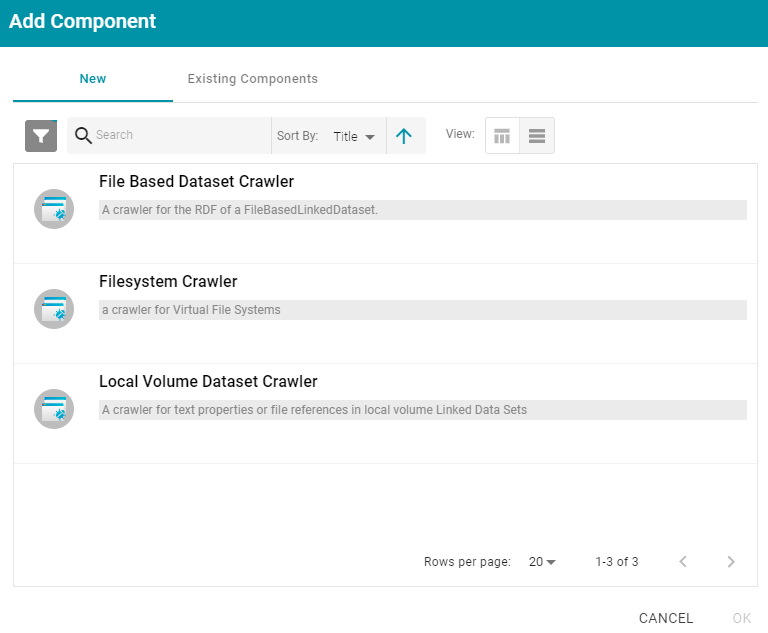Lists crawlers are essential tools in the world of web scraping and data extraction, allowing users to automate the collection of information from various sources on the internet. In this article, we will explore what lists crawlers are, their applications, and how to effectively utilize them for your data needs. By the end of this article, you will have a solid understanding of lists crawlers and be able to implement them in your projects.
As the digital landscape continues to grow, the need for effective data collection methods becomes increasingly important. Lists crawlers serve as a bridge between raw data and actionable insights, enabling businesses and researchers to gather valuable information quickly and efficiently. This guide will delve into the intricacies of lists crawlers, offering practical advice and examples to enhance your data collection efforts.
Whether you are a seasoned developer or a newcomer to the world of data scraping, understanding lists crawlers is crucial for maximizing your data collection capabilities. In the following sections, we will break down the various components of lists crawlers, their benefits, and best practices for implementation.
Table of Contents
What Are Lists Crawlers?
Lists crawlers are automated scripts or software designed to navigate websites and extract specific information, typically organized in lists. They operate by following hyperlinks, parsing HTML content, and retrieving data points such as names, addresses, prices, and more. The primary goal of a lists crawler is to gather structured data that can be analyzed or stored for further use.
Key Features of Lists Crawlers
- Automation: Lists crawlers can run continuously or on a schedule, reducing the need for manual data collection.
- Scalability: They can handle large volumes of data from multiple sources simultaneously.
- Customization: Users can define specific parameters for data extraction, such as keywords, data types, and formats.
How Do Lists Crawlers Work?
The operation of lists crawlers involves several key steps:
Applications of Lists Crawlers
Lists crawlers have a wide range of applications across various industries, including:
- Market Research: Gathering competitor pricing, product offerings, and customer reviews.
- Job Aggregation: Collecting job postings from multiple job boards.
- Real Estate: Extracting property listings and real estate data from various websites.
- Social Media Monitoring: Monitoring mentions, hashtags, and user activity.
Benefits of Using Lists Crawlers
Utilizing lists crawlers offers several advantages, including:
- Efficiency: Automating data collection saves time and resources.
- Accuracy: Reduces human error in data entry and collection.
- Data Availability: Access to up-to-date information from various sources.
Best Practices for Lists Crawlers
To ensure the successful implementation of lists crawlers, consider the following best practices:
- Respect Robots.txt: Always check the website's robots.txt file to understand what pages can be crawled.
- Rate Limiting: Implement rate limiting to avoid overwhelming servers and getting blocked.
- Data Validation: Regularly validate the extracted data to ensure accuracy and relevance.
There are several tools available for building and managing lists crawlers. Some popular options include:
- Scrapy: An open-source and powerful web crawling framework.
- Beautiful Soup: A Python library for parsing HTML and XML documents.
- Octoparse: A user-friendly, no-code web scraping tool.
Challenges in Using Lists Crawlers
While lists crawlers are powerful, they come with their own set of challenges:
- Legal Considerations: Be aware of copyright laws and website terms of service before scraping data.
- Website Changes: Frequent changes to website layouts can break crawlers, requiring regular updates.
- IP Blocking: Websites may block IP addresses that make too many requests in a short period.
The Future of Lists Crawlers
The future of lists crawlers looks promising, with advancements in AI and machine learning enhancing their capabilities. Predictive analytics and natural language processing will allow for even more sophisticated data extraction and analysis. As data continues to play a pivotal role in decision-making, the demand for efficient lists crawlers will undoubtedly increase.
Conclusion
In summary, lists crawlers are invaluable tools for data collection and analysis. They streamline the process of gathering structured information from various sources, making them essential for businesses and researchers alike. By understanding how lists crawlers work and the best practices for their implementation, you can harness their power to enhance your data-driven projects.
If you found this article helpful, please leave a comment below, share it with others, or explore more articles on our site for further insights!
Closing Remarks
Thank you for taking the time to read this comprehensive guide on lists crawlers. We hope you found the information valuable and are encouraged to apply it in your projects. Visit us again for more articles and resources on data collection and analysis!
Article Recommendations



ncG1vNJzZmibkafBprjMmqmknaSeu6h6zqueaK6Zobmitc2sZKGnnKHGuLvOnWaloaOpwG6v0ZqupZ2iqHupwMyl